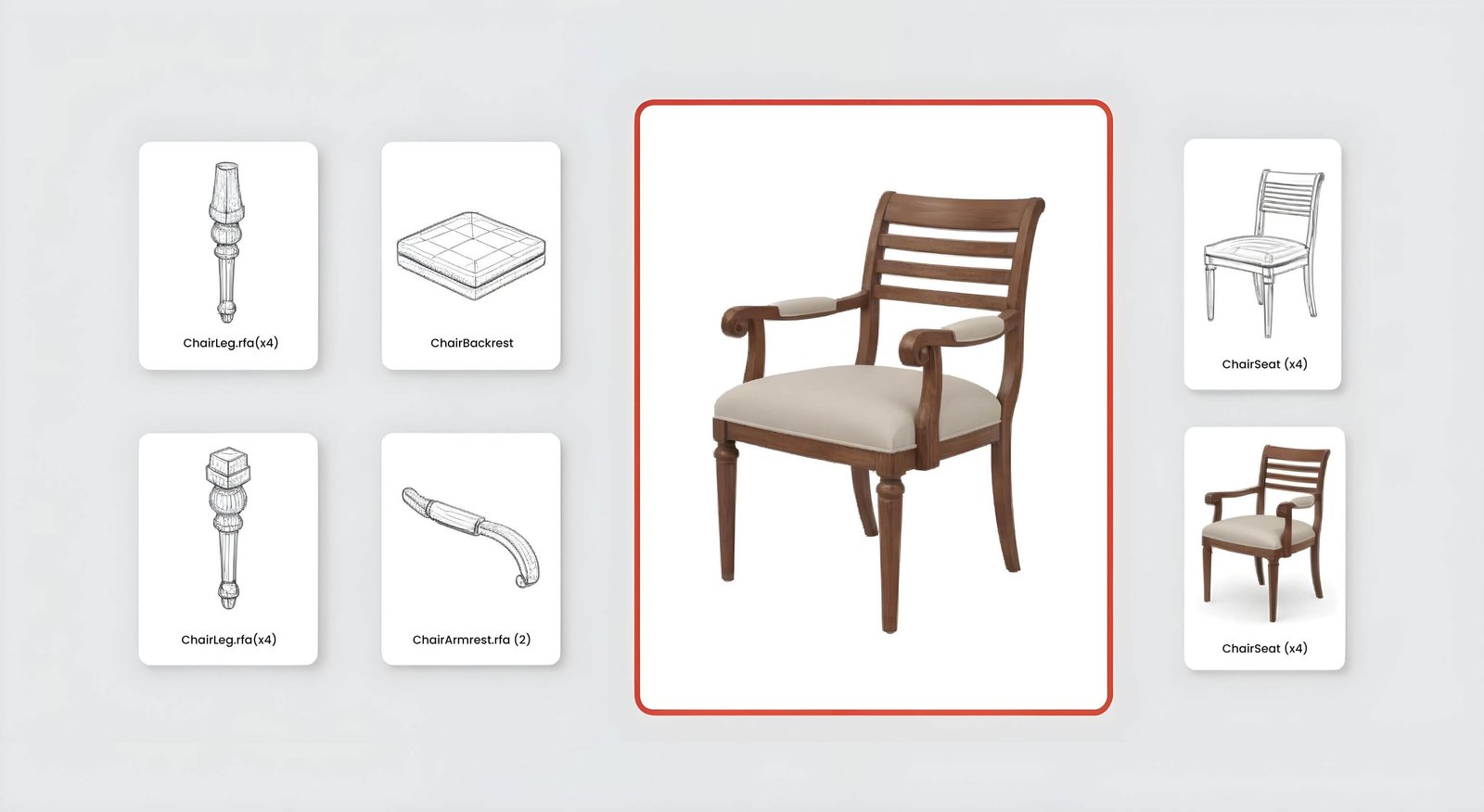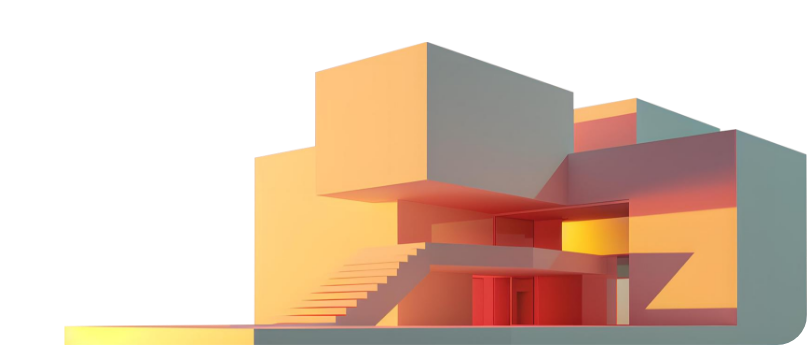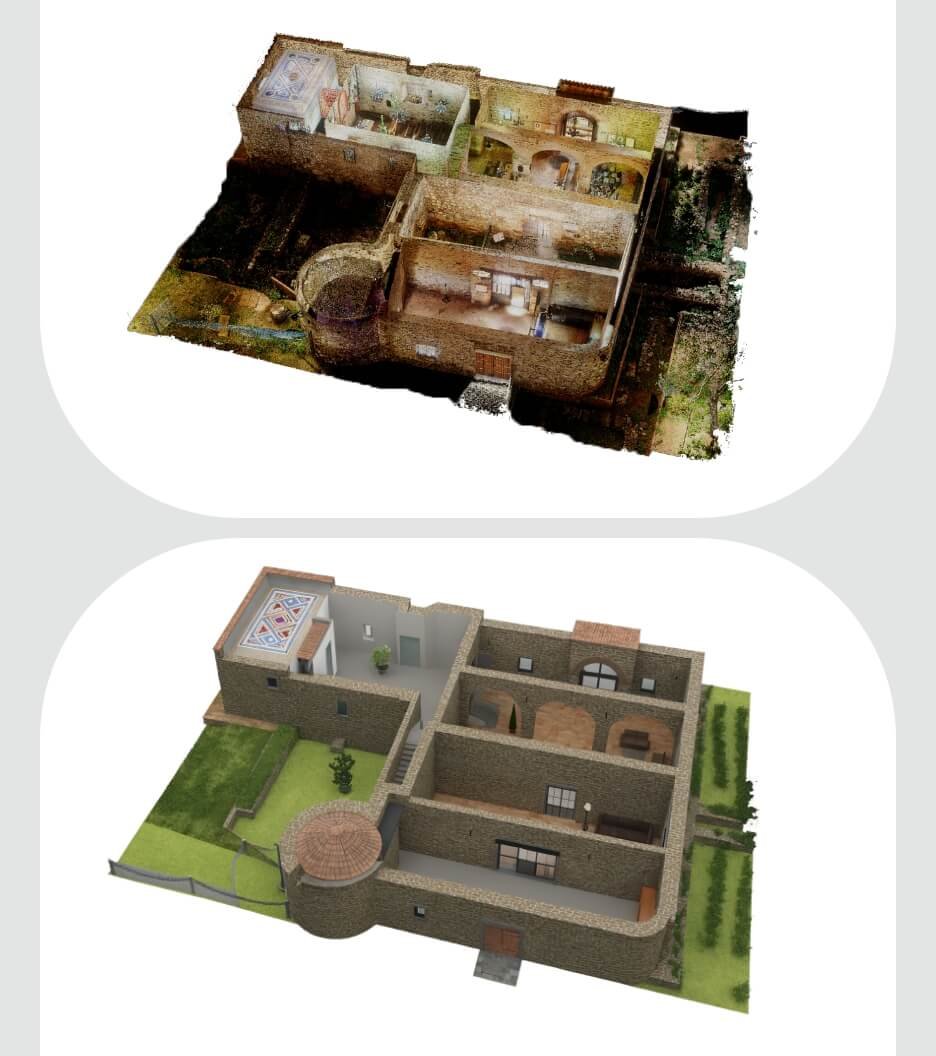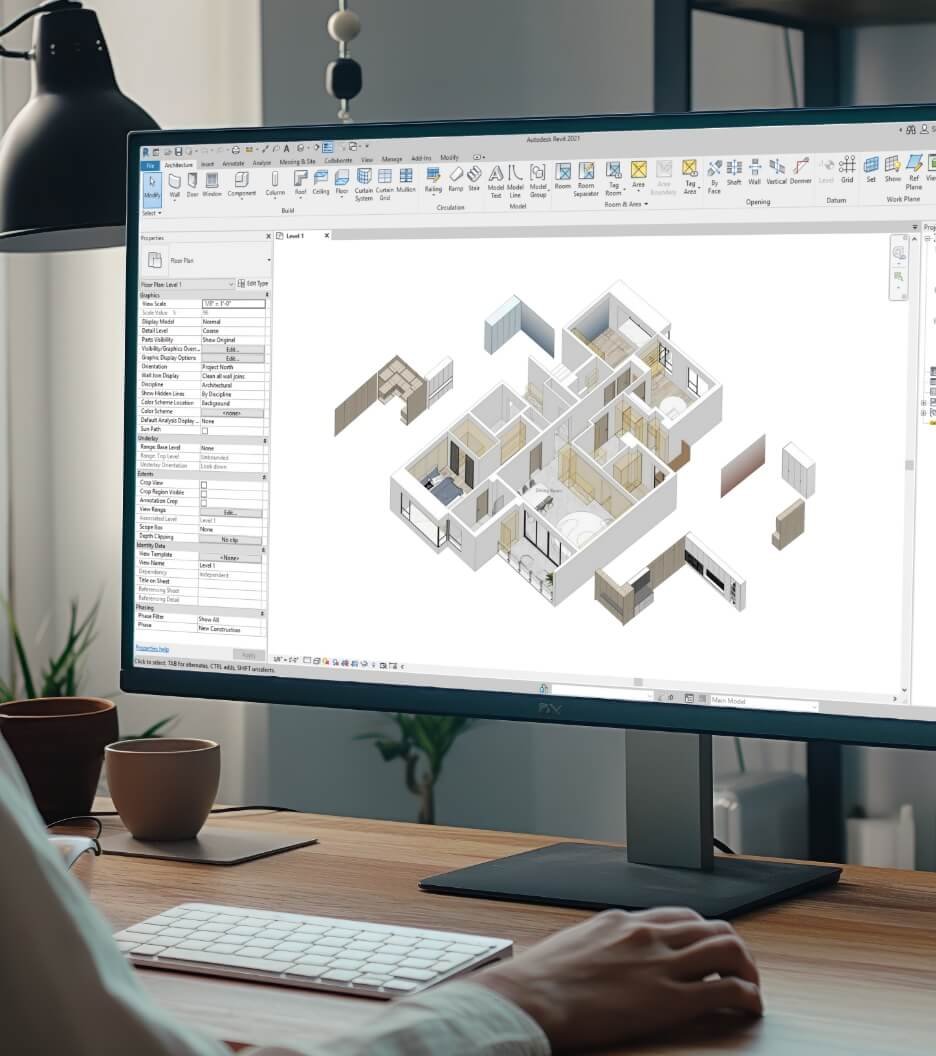 Mahipal Jadeja
Mahipal Jadeja
Creating Nested Families: When and Why You Should Use Them
 Mahipal Jadeja
Mahipal Jadeja

Send Us Your Requirement
In the realm of architecture and construction, BIM modeling has brought a new perspective to the approach. In a digital way, a seamless workflow, enhanced visualization, precision, and efficiency are more straightforward to achieve with the help of 3D BIM. However, working on digital curation involves a range of tasks, from small to large, such as dimensions, textures, various components that make the project functional, necessary elements, and more.
Every project varies from each other; naturally, its dimensions, components, design, and other aspects will differ too. So, how are these different elements created? How time-consuming is it to produce every component for the project? Revit is one of the software programs that has revolutionized how architects, designers, and engineers work on construction projects.
Developed by Autodesk, it is BIM software that offers a key feature called Revit families. Revit offers various benefits that enable it to maintain workflow and efficiency. Families in Revit come in many types, each unique and offering its own benefits. Each of the Revit family types is significant for Revit users and useful for various kinds of construction projects, including commercial, residential, infrastructure, and others. Any infrastructure BIM model requires components or elements that fulfill the project’s demands and enable improved visualization.
Components such as doors, windows, lights, walls, and many others are curated in Revit and also leveraged from Revit libraries. They act as a rich data source, enabling AEC professionals to use the components. As every project varies from each other, Revit library components may not fit correctly as per the requirement, design, shape, dimensions, and more. Moreover, components that are present in the Revit library are non-editable, cannot be used in different project files, and aren’t dynamic in nature.
Hence, the concept of Revit family creation services comes into play, enabling project-dependent components and allowing AEC professionals to seamlessly complete construction projects. As mentioned, there are various types of Revit families; let’s discuss them with key insights and understand nested families in Revit.
Maintain precision in AEC projects with Nested Families
Talk to Us
What are Revit Families in AEC?
As said, Autodesk Revit has revolutionized the approach for AEC professionals for a greater level of collaboration and high efficiency in executing the construction project. As a significant part of the AEC today, Revit has an exceptional feature that allows for the creation of families of components required for a project. Revit family services are defined as a collection of items, elements, or components that share common behavior and appearance. Typically, these families include walls, doors, furniture, lights, MEP equipment, and fittings. Additionally, AEC professionals can customize and curate new families depending on the project requirements.
Revit family creation services introduce diversity in design, enabling architects and designers to explore a wider range of options. Revit has become an indispensable tool in the architecture and construction realm today, comprising a vast array of aspects. The following are the major types of Revit families.
- System families: This type of Revit family is a fundamental element and component that can be used for the project. However, system families cannot be edited or used with different types of files. It usually includes floors, walls, pipes, doors, and other components that are common.
- Loadable families: In this Revit family, components can be created and modified as per project demands. Loadable Families represent objects that can be imported, reused, and parameterized for use in various applications. They are stored as separate .rfa files and can be loaded into any project.
- In-place families: In-place families are one-off elements created within a specific project, typically ideal for custom, non-repetitive geometry, such as curved architecture, unique MEP revit family components, and more.
Major these are types of families in Revit which are useful for AEC professionals. However, this isn’t the end, as Revit family workflow contributes to efficiency and flexibility with another concept called nested families. Creating a component involves multiple parameters, depending on project requirements and the level of detail required. Explore further in detail what nested families are in Revit and how they have become a key part for AEC professionals.
What are Nested Families in Revit?
While Revit families creation seamlessly allows architects and engineers to enhance efficiency in the BIM model, another concept that contributes to precision is nested families. As stated, Revit is a comprehensive software that continually updates with new technology and innovation. In simple terms, nested families in Revit are essentially families placed inside other families. This technique enables AEC experts to create complex, multi-component Revit families, where the nested (inner) families form part of the host (outer) family’s geometry and behavior.
For example, creating a door in a loadable family involves various parameters, including dimensions (height, width, thickness), other components such as handles, hinges, and stoppers, as well as the type of material, among others. Catering to various parameters in a single Revit family isn’t possible, as it results in inefficient and chaotic processes.
On the other hand, every component, such as the handle, hinges, stopper, and material, is separately created as a family and then combined as a whole to form a single component. This is where nested family work enables the curation of separate components and their combination to form a whole. Moreover, the concept holds vast importance, resulting in accurate project outcomes. The primary purpose of utilizing the power of nested families is;
- Combine Geometries: Display the combined shapes of multiple components as a single unit.
- Simplify Modeling: Reuse existing components (the nested families) rather than modeling complex parts from scratch within a single family.
- Parametric Control: Enable complex parametric behavior, such as controlling the visibility, position, or number of the nested components via parameters in the host family.
With those mentioned above, the key factors that shed light on the importance of nested Revit families are. Nonetheless, this concept offers a variety of benefits, as follows;
Benefits of Nested Revit Families
Scalability
Flexibility in workflow
Enhanced efficiency
Maintaining consistency
Customization of components
Error reduction
Nested families in Revit have become a significant part for AEC professionals to have precise and efficient components. It is also utilized for structural and MEP components, making complex yet accurate elements that align with project goals. As a matter of fact, there are mainly two types of nested families. Let’s explore them in detail.
Types of Nested Families in Revit
Nested families enable the efficient and accurate creation of complex component designs, eliminating the need for significant time and effort. As it maintains efficiency, it also helps to ensure consistency throughout the overall project, encompassing various elements. Moreover, nested families also have a feature that links parameters (locks), which significantly saves the time and effort of Revit users.
It is a feature that results in one change in a component and is reflected accordingly in other components as they are assembled. Changes made in the nested family will automatically update all elements without error, saving time by eliminating the need for manual editing. There are two main ways to use nested families, distinguished by a critical property: Shared vs. nested families.
Non-Shared (Regular) Nested Families
- Definition: The default setting where the nested family is not checked as “Shared” in its properties.
- Project Behavior: When the host family is loaded into a Revit project, the nested family’s individual components do not appear in schedules, tags, or filters. The project only recognizes the host family as a single entity.
- Use Case: Ideal for components that are purely structural or graphical parts of the host family and don’t need to be independently scheduled or tagged.
- Example: A handle nested within a cabinet family. You want the handle to move with the cabinet, but you only want to schedule the cabinet itself.
Shared Nested Families
- Definition: The nested family is defined as shared in its Family Category and Parameters dialog before being loaded and nested into the host family.
- Project Behavior: When the host family is loaded into a Revit project, the nested family is also loaded independently and retains its own identity. It appears in schedules (using its own category) and can be tagged separately. It can be mirrored, rotated, and flipped while maintaining its relationship to the host family.
- Use Case: Essential for assemblies where the components need to be grouped for placement but individually tracked for documentation (schedules, quantity take-offs).
- Example: Chairs nested within a table family. When loaded into the project, the assembly functions as a single unit, but the individual chairs can be scheduled and counted separately.
As these are the two major types, various elements can be curated in the nested families, such as;
Common Elements in Nested Families
Mechanical and electrical systems
Furniture, lights, and fixtures
Structural components
Doors and windows
Nested families in Revit are a powerful tool for architects, designers, and other AEC professionals. From streamlining workflows to maintain consistency in the project designs, it helps to create more efficient and accurate BIM models. Technology and innovations are constantly evolving, and AEC firms seek key methods to stay ahead of the market while achieving precise results.
Therefore, outsourcing Revit family creation services is a comprehensive approach, as a team of professionals has access to the latest technology, the ability to manage complex projects, and the understanding of processes, codes, and standards, ensuring efficiency among other benefits.
Outsourcing revit family services is a beneficial aspect and partnering with renowned experts is evident. UniquesCADD is a top BIM company with significant years of experience. With specialization in Revit family services, a team of experts offers precise outcomes using the latest technology.
Final Note
As the AEC industry evolves continuously with the emergence of innovation and technology, adopting new approaches is evident. Nested families quickly became a key role player in AEC projects, leading to precision, efficiency, and reduced errors with consistency throughout.


